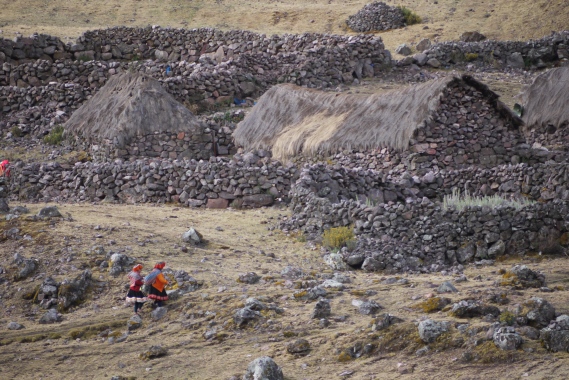1/ Wherever you go, it is gorgeous and there is coffee absolutely everywhere.

Somewhere between Santa Maria de Dota and Frailes, Tarrazu, Costa Rica.

Same road, coffee growing in the shades of banana trees and other trees.

Hills covered by coffee trees in the shade of banana trees in one of the most beautiful places in Costa Rica, Santa Maria de Dota, 1650-1800m of altitude, Tarrazu, Costa Rica.
2/ Between December and March, early in the morning and late in the afternoon you’ll see pickup trucks driving people around with strange hats covering the neck and rubber boots, they are coffee pickers. For some reasons I didn’t dare taking pictures of them.
3/ Along the road, every kilometre or so, you will see (most of the time) little (often wooden) huts. In Spanish they are called “recibidor” and are used to gather the coffee picked in the area.

A truck is delivering the coffee picked so far in the day in a “recibidor” belonging to the mill where the coffee will be brought later on to be processed, here in Tarrazu, Costa Rica.

Truck waiting to deliver coffee at a recibidor, Tarrazu, Costa Rica.
4/ By the end of the day, you won’t be slowed down by traffic jams but by trucks collecting the harvest of the day to bring the coffee cherries to the nearby mill where they will be processed.

A recibidor has 2 openings : the upper one where the coffee is delivered and the lower one where a truck fits underneath to receive the cherries going through a small opening. Here in San Gerardo de Rivas, Costa Rica.

Sometimes there are several openings like this one in Tarrazu, Costa Rica

Big recibidor from a major cooperative in Tarrazu, Costa Rica.
5/ Check out the bus stops! In small villages where most of the income is made by coffee, cooperatives or mills tend to sponsor public services.

Bus stop in San Pablo de Leon Cortez, Tarrazu, Costa Rica

Another one in the same village.

Other example in Rivas, Perez Zeledon, Costa Rica.

Reblogged this on Costa Rica Blog Network .com.